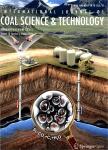Design of push-pull system to control diesel particular matter inside a dead-end entry
Design of push-pull system to control diesel particular matter inside a dead-end entry作者机构:Department of Mining & Nuclear Engineering MissouriUniversity of Science and Technology Rolla MO 65401USA Clean Air Power Inc. Poway CA 92064 USA Division of Mining and Resources Engineering Departmentof Civil Engineering Monash University Clayton CampusWellington Road Clayton VIC 3800 Australia
出 版 物:《International Journal of Coal Science & Technology》 (国际煤炭科学技术学报(英文))
年 卷 期:2015年第2卷第3期
页 面:237-244页
学科分类:081406[工学-桥梁与隧道工程] 0808[工学-电气工程] 0819[工学-矿业工程] 081903[工学-安全技术及工程] 08[工学] 0807[工学-动力工程及工程热物理] 0818[工学-地质资源与地质工程] 0815[工学-水利工程] 0813[工学-建筑学] 0814[工学-土木工程] 082301[工学-道路与铁道工程] 0823[工学-交通运输工程]
基 金:National Institute for Occupational Safety and Health, NIOSH: 1 R25 OH008319 Western University, UWO
主 题:Diesel particulate matter Computational fluid dynamics Ventilation Underground condition Push-pullsystem
摘 要:Diesel particulate matter (DPM) is considered to be carcinogenic after prolonged exposure. With more diesel- powered equipment used in underground mines, miners' exposure to DPM has become an increasing concern. This paper used computational fluid dynamics method to study the DPM dispersion in a dead-end entry with loading operation. The effects of different push-pull ventilation systems on DPM distribution were evaluated to improve the working conditions for underground miners. The four push-pull systems considered include: long push and short pull tubing; short push and long pull tubing, long push and curved pull tubing, and short push and curved pull tubing. A species transport model with buoyancy effect was used to examine the DPM dispersion pattern with unsteady state analysis. During the 200 s of loading operation, high DPM levels were identified in the face and dead-end entry regions. This study can be used for mining engineer as guidance to design and setup local ventilation, select DPM control strategies and for DPM annual training for underground miners.



